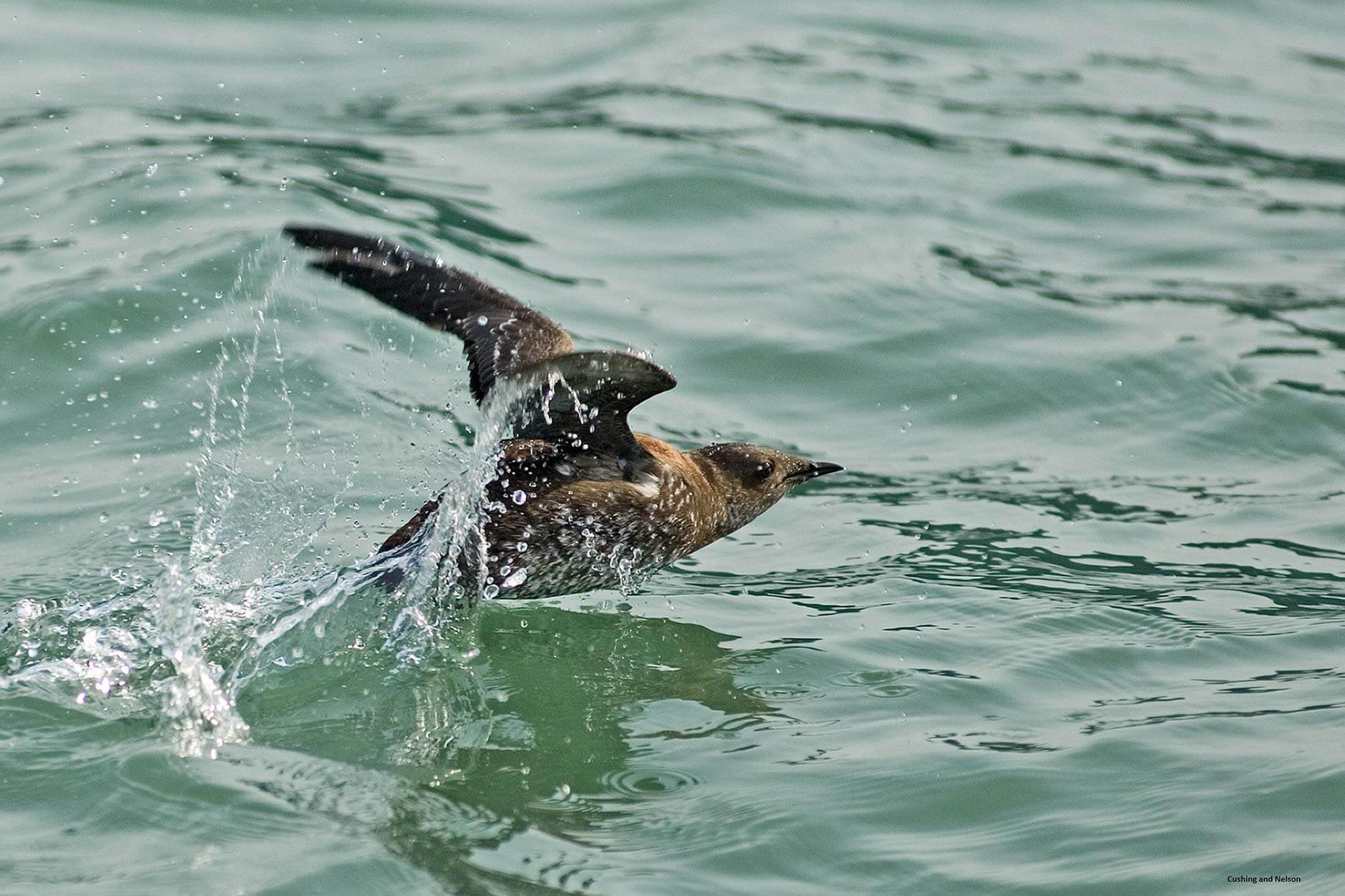Ornithology Mystery Solved at Big Basin

Marbled murrelets sport mottled brown feathers during breeding season, which falls between mid-April and late September.
(Photo credit: Oregon State University)
For decades, the marbled murrelet vexed biologists and birders. Scientists hypothesized that the seabird nested on cliffsides (like other members of the auk family), on islands, or in burrows. Some theorized that marbled murrelets lived under lakes, using underwater entrances like beavers. Despite years of systematic research, hordes of dedicated birders, and a $100 reward from Audubon Field Notes, no one could attest to laying eyes on an actual nest.
No one, that is, until tree surgeon Hoyt Foster. Tasked with removing damaged tree branches after a freak snowstorm, Foster visited Big Basin Redwoods State Park in 1974. One day, he hoisted himself into an immense Douglas fir half a mile from the visitor center. At 148 feet in the air, he noticed a fuzzy grey chick...with webbed feet. As he attempted to rescue the chick, it fell from the tree. Park rangers, and experts eventually identified the bird: a marbled murrelet.
Marbled murrelets are small and chunky—they’re often described as a flying potato with a beak. For more than half the year, birds sport greyish feathers with black-dipped wings and heads; during breeding season, adults turn a mottled brown. Marbled murrelets fly over the redwoods at dawn and at dusk—en route to the ocean to catch fish, or to their hidden nest in the redwoods.
The marbled murrelet is an especially vulnerable bird. Listed under the Endangered Species Act since 1992—it is threatened by oil spills, unsustainable fishing, and onshore habitat loss.
“Like salmon, they have the bad luck of depending on not one but two very different habitats, doubling their exposure to human impacts,” said science writer Eric Scigliano.
In 1901, after a dogged two-year campaign, Sempervirens Club persuaded California Legislature to protect 3,800 acres of old-growth redwood forest—what is now Big Basin Redwoods State Park. At the time, nobody knew that Big Basin would become the backdrop for an important discovery—or, that the park would be a refuge for such a strange and sensitive seabird.
Note: State parks in the Santa Cruz Mountains are “crumb clean,” meaning visitors are required to pick up any food scraps they bring into the park. Food scraps attract corvids—namely jays and ravens—, which are known for attacking marbled murrelet nests. To avoid drawing corvids into the park, please do your part and pick up crumbs.

